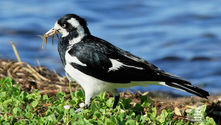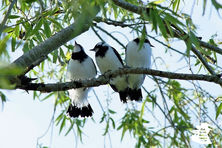
Shoppers Feedback:
Jan 17, 2017
Hello Ros,
I have now paid the invoice, but I would like to write to you just to say a big THANK YOU for getting me the Penguin!
The ChatterMate Penguin became a nice memory for me when I was in New Zealand, and I am so greatful to you for arranging so that I could have it! :-)
Thank you so much!!!!!!!!!!!
Regards,
Malin
Hi Ros,
Many thanks for your very kind email. I really appreciate your prompt reply!
I appreciate your advice regarding the decorations and customs. These are a gift for my daughter’s exchange student family so when she returns home on the weekend I will show her and see if she loves them as much as I do!
Thanks so very much again - I am truly grateful for your kind assistance.
Kind Regards
Bernadette
Ros,
Thanks again for the great customer service. It's a refreshing change!
Best regards,
Trevor
Hey Roz,
Thank you for your emails. Just loved my first order. The cute little Aussie bush critters are going to be used for an office Christmas decoration. My colleagues also liked them and talked about making an order to your site. I'll send you a photo when completed.
I'll be ordering more to send to my daughter's host family in America.
Fabulous service from you.
Kind regards,
Michelle
Thankyou. Order arrived today. One very happy grandson with his new beastly binoculars.
Regards,
Irene
- Home
- Wild Wonders
- Shop
- Aromas of Australia
- Australian Made
- Books
- Book Marks
- Christmas Decoration Sale
- Christmas Decorations
- Clocks
- Drink Holders
- Garden & Outdoor
- Gift Wrapping & Cards
- Home & Giftware
- Jewellery
- Keyrings
- New Products
- Pencils & Pen Holders
- Photo Frames
- Plush Toys
- Plush with Sound
- Sheepskin Rugs
- Stationery
- Stone Carvings
- Toys & Games
- Travel Goods
- Wedding
- Wild Figurines
- Wildlife Safety Products
- Wind Chimes
- Wine Charms
- View All Products
- Wildlife
- Australiana
- Explore
- Contact Us
Magpie Lark

Quick Facts
| Length: | 28 cm |
| Height: | - |
| Weight: | 92 grams |
| Colour: | Black and white |
| Habitat: | Almost any habitat except rainforests and the driest deserts |
| Food: | Insects and their larvae, earthworms and freshwater invertebrates |
| Predators: | - |
| Status: | Not Present in Tasmania. Secure in all other states and territories in Australia |
The Magpie-lark is distinctively marked in black and white. The thin whitish bill and pale iris separate it from other similarly coloured species. The adult male Magpie-lark has a white eyebrow and black face, while the female has an all-white face with no white eyebrow. Young birds have a black forehead, a white eyebrow and a white throat. The Magpie-lark is often referred to as a Peewee or Pee Wee, after the sound of its distinctive calls in New South Wales and Queensland and is also known as Murray Magpie in South Australia.
The name Magpie-lark is quite misleading, as the species has no link with either the magpies or the larks. However, the Magpie-lark is sometimes confused with the Australian Magpie. While both species are black and white, the Magpie-lark is noticeably smaller than the Australian Magpie.
Magpie-larks are confined to Australasia, being found throughout Australia (although only a rare vagrant to Tasmania), southern New Guinea and Timor.
Magpie-larks are found in almost any habitat except rainforests and the driest deserts and are familiar urban birds.
Seasonal migrations;non-breeding and young birds form large nomadic flocks, sometimes consisting of several thousand individuals; mainly move north in autumn/winter and south in spring/summer
The Magpie-lark is mostly ground-dwelling, and is usually seen slowly searching on the ground for a variety of insects and their larvae, as well as earthworms and freshwater invertebrates.
Magpie-larks build an unusual mud nest and generally breed from August to December (though may occasionally breed outside this time). During the breeding season both the male and female gather wet mud and construct a bowl-shaped nest on a horizontal branch, or similar site, often up to 20 m above the ground. The bowl is lined with feathers and grasses. The male and female birds often sit side by side and call alternately, each raising and lowering their wings as they do so. Magpie-larks aggressively defend their nest and territory, which may occupy up to 10 ha. Both parents share the incubation duties and care for the young. If conditions are favourable, more than one brood may be reared in a year.
Magpie-larks can be aggressive during breeding season.
Last Updated: Tuesday 8th November, 2016
BirdLife Australia - www.birdlife.org.au
BUSH e-TELEGRAPH
Signup for our monthly newsletter the "e-Telegraph"
Quick Links
Home | The Beginning | About The Land Down Under | Wild Wonders | Advertise on Wild Wonders | Christmas Decoration Sale | Christmas Tree Decorations | Drink Holders | Plush with Sound | Stone Carvings | Wildlife Wine Charms | Freebies | Australian Wildlife | Help Our Wildlife | Australiana | Photo of the Month | Explore The Land Down Under | Contact Us | Legal Notices


